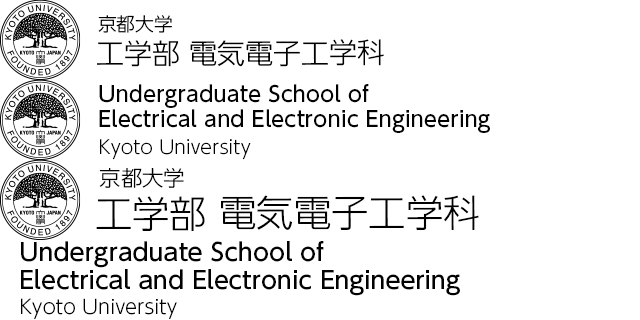Integrated Systems Biology
Life and intelligence are regarded as learning systems; they make changes by themselves and become adapted to their changing and even uncertain environments. We are trying to reveal the adaptation mechanism of these learning systems by combining computational studies and systems-biological studies. The members of our laboratory have a wide variety of research interests: decision-making processes of humans, molecular dynamical systems of cells, motor controls of robots, bioinformatics, and social network analysis. To achieve challenging goals of interdisciplinary research, our laboratory shall be a place of interaction among students and researchers with diverse backgrounds.
Academic Staff
Shin ISHII
Professor (Graduate School of Informatics)
Research Interests
- Statistical learning
- Reinforcement learning
- Computational neuropsychology
- Systems neurobiology
- Bioinformatics
Contacts
Room 421, Building of Engineering No.1, Yoshida Campus
TEL: +81-75-753-4908
FAX: +81-75-753-4907
E-mail: ishii_at_i.kyoto-u.ac.jp
Shigeyuki OBA
Junior Associate Professor (Graduate School of Informatics)
Research Interests
Contacts
TEL: +81-75-753-4906
FAX: +81-75-753-4907
E-mail: oba@i.kyoto-u.ac.jp
Shin-ichi MAEDA
Assistant Professor (Graduate School of Informatics)
Research Interests
Contacts
Introduction to R&D Topics
Computational Cognitive Psychology
Human brain functions such as sensory analysis, performing an action, memory and decision-making have individual sites. In these functions we focus on higher cognitive function including learning, language, communication which enable us to perform appropriately in ambiguous environment. The goal of our research is to develop novel model for information processing mainly on the prefrontal cortex. To verify it we have cognitive experiments using non-invasive brain mapping.
Prediction-based Models of Auditory System
Animals survive inevitably facing the non-stationary world as well as noises of their sensors and motors. It has been becoming an acceptable viewpoint that their amazing robustness must be supported by theoretically-sound information processing in their brain. Based on this viewpoint, we have been investigating visual and auditory information processing in humans, emphasizing their predictive aspects.
Statistical Learning
Machine learning formalizes our knowledge and learning mathematically so as to handle them by computer program. In machine learning research area, statistical learning theory expresses our knowledge by statistical terms. We investigate various new methods in machine learning and apply them to robot control, letter recognition, voice recognition, biological information recognition and so on. We also reveal brain function by modeling research of human intelligence using statistical learning theory.
Reinforcement Learning
RL is a machine learning framework to acquire an optimal action policy based on actual experiences and rewards. In our laboratory, we develop an RL method for automatic control problems in continuous state and action spaces, and then apply it to various engineering problems. We expect that these methods will be useful for modeling the mechanism of the human learning from motion sequences.
Neuroinformatics
Neuron, a primary component of brain, works by the interaction of many kinds of proteins. All neural phenomenon, change of membrane potential, growth of axon, and synaptic plasticity for example, are controlled by proteins on a membrane and inside a neuron. Then it is important to explain these phenomenon with protein molecule networks. The aim of this research field is to understand the protein network in nerve systems by computational techniques.
Bioinformatics
Recent methods on biology produce huge amount of data. In order to extract considerable knowledge from such data, machine learning and statistical methods play critical roles.
We develop statistical methods needed in gene expression analysis. We also collaborate some biological and medical research groups on gene expression analysis.
